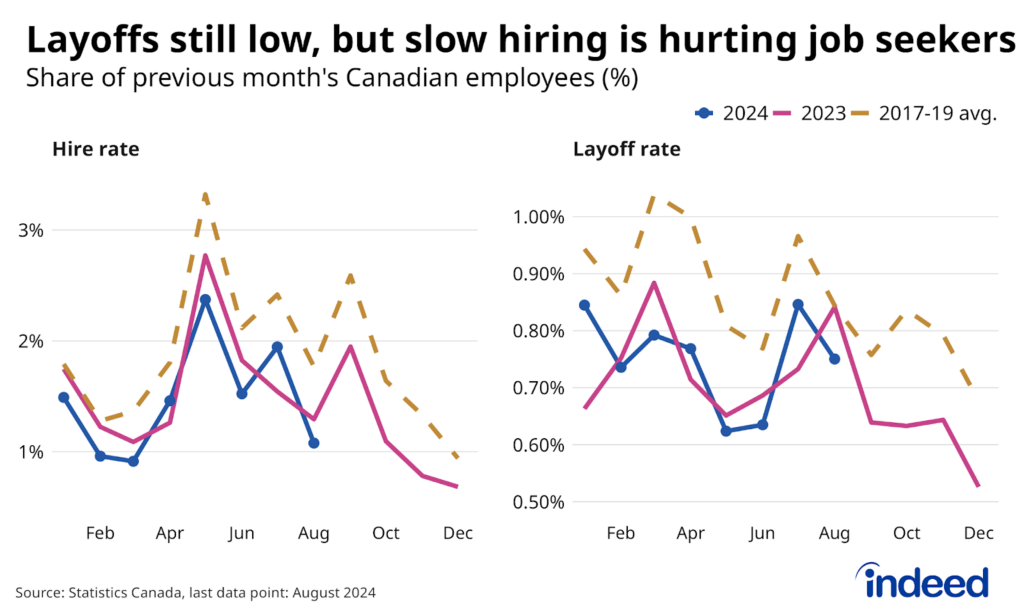Employment made strides in September, offering a slight reprieve from the recent trend of flat Labour Force Survey (LFS) readings. But while the gain of 47,000 jobs was notable, it failed to keep up with the 110,000 jump in population, and the employment rate slipped once again.
Details beneath the headline number were mixed. More positively, full-time employment jumped up, as did jobs in the private sector. However, total hours worked (which tend to be volatile) slipped. Meanwhile, the unemployment rate provided a bit of a headfake, as its downtick to 6.5% was driven by slightly lower labour force participation. Ultimately, the employment rate is probably the best barometer of the job market’s health, and while it hasn’t plunged, it still has declined in every month but one over the past year.
On the wage front, Canadian paychecks continued to grow briskly in September. While the pace of gains edged down somewhat overall wage growth was a still-solid 4.6%, year-over-year. Wage gains have been a bright spot in an otherwise subdued job market, even as other indicators of labour demand, including job postings on Indeed, have continued easing. Pay gains will come back to earth eventually, but the trend shows little sign of an immediate turn. Fortunately, this robust wage growth has not prevented inflation from cooling more broadly.


